Note
it's slightly funnier if it's rían bc denethor is named after her son and then named his firstborn after that denethor's son boromir and we don't know anything about denethor i's father! i mean. wildly improbable in any case. but imagine denethor (ii)'s reaction to having gandalf as an ancestor also gandalf going on about denethor's elite ancestry and how whatever the particulars of it blahblah would become 10x funnier
(angraine's tags)
Another crack theory about characters Gandalf could be a secret ancestor of:
'I know that well, or I would not deal with you in the same way ' said Aragorn. 'May the Shire live for ever unwithered!' And kissing Merry he went out, and Gandalf went with him.
Pippin remained behind. 'Was there ever any one like him?' he said. 'Except Gandalf, of course. I think they must be related.
Are you familiar with the crack theory that Faramir is Gandalfs son? It explains why Denethor doesnt trust him, why Gandalf risks everything to save him, and why Sam thinks that he has an air of Wizards. I dont buy it myself, but I think it is an interesting theory. Love that you love Farawyn btw it is my otp haha!
I... uh, no, haven't run into that particular iteration before. I'm a solid "no" on it myself, I'll admit—Denethor himself has a similar air according to Pippin (before seeing Faramir), so attributing Faramir's directly to Gandalf seems weird and unnecessary to me, and I dislike "Finduilas cheated on Denethor" theories/headcanons on general principle. OTOH I'd be genuinely amused (despite not seeing Gandalf as a sexual being at all and not thinking it at all probable) at the prospect of Gandalf/Rían daughter of Barahir or Gandalf/Morwen daughter of Belecthor.
Thanks about Faramir/Éowyn! It is a truly excellent pairing :)
11 notes
·
View notes
Text

Shadowfax and Olórin ⭐️✨️
I like to imagine that they met in Valinor when Gandalf was very young... like some kind of past life… or maybe they met in a dream, in a vision. One of the many things I fantasize about in the long hours of rest my illness forces me on (when the pain isn't too intense to stop me from thinking) .
Eh, I'm very melancholic these days😔
268 notes
·
View notes
Text

Olórin at the dawn of Arda
49 notes
·
View notes
Text
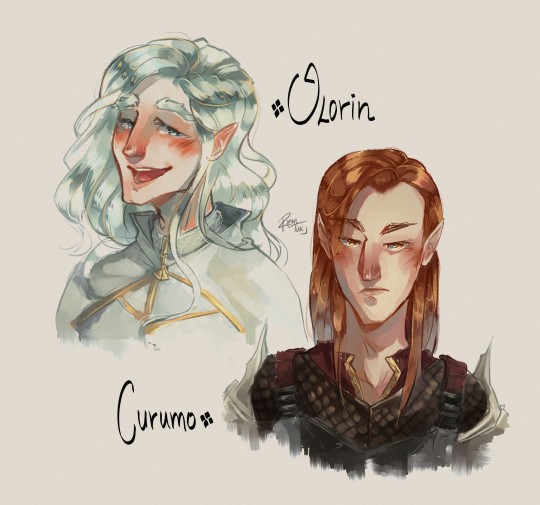
Long time not drawing Olórin, there's no much of him as I would like :')
Also first drawing portraying Curumo! I think I really like this look for him, it's always fun to imagine Silmarillion characters ☺️
164 notes
·
View notes
Note
I really like your Silm commentary and writing and I'd definitely be interested in hearing more about how you see the Valar
-@outofangband
There are lots of ways you can read the metaphysics of Tolkien's world. One common reading is what I will call the "naive Catholic" reading, which is basically this: Tolkien was Catholic, so let's import certain basic metaphysical assumptions from Catholicism into his world, like neo-Platonism and a moral law following from a divine natural order, and take at face value, as if offered from the point of an omniscent third-person narrator, all commentaries on how the universe works, both within published works and from those non-published works which can be made consistent with them: LACE, different Silmarillion drafts, etc.
This approach has some problems, IMO. Not least is that we know many of those unpublished works are transitional fossils in an author's evolving thinking about his own world, and were later discarded. Similarly, we know that the major narratives themselves are explicitly mythologized, at various times conceived of as being the mythology of the Elves, some of whom had contact with the Valar in Valinor, or even as the mythology of Numenor, who had these stories thirdhand from the Elves, and wrote them down in some cases millennia after. I think it's also evident, by the way, that while Tolkien was very Catholic in his thinking in some ways, he was less so in others; the picture of him that emerges in his letters is someone who is religious without being dogmatic or ostentatiously pious, someone for whom religion is an important part of his life, but is not so all-consuming he finds it impossible to relate to anybody who is not religious. He is, in other words, a complete human being, and viewing his work only through the lens of his Catholicism is quite in error.
Another way to read Tolkien--which is not in contradiction with the "naive Catholic" reading, it just receives it differently!--is what I think of as the "Lintamande reading": the Valar are bastards. Let's face it: as written, the way the Valar relate to the Children of Iluvatar, and especially the Elves, can rankle. They summon the Elves to Valinor as soon as they discover them at Cuivienen, essentially seeking to annex them to Valinor without giving them a chance to develop their own culture and identity. They don't offer support to them in situ (though this is within their power), and their attitude is essentially "come to us, so we can protect you, or be left alone in Middle-Earth, probably to have to deal with Morgoth on your own." Manwe is framed as a king, ruling Arda from Taniquietil; the halls of Mandos have a purgatorial quality, condemning the unrepentant to a tormented, bodiless existence, while stripping from those who do eventually reincarnate aspects of themselves the Valar find troublesome. The valar refuse to help the innocent or guilty during the centuries of struggle in the First Age, and it becomes clear when they finally do rouse themselves to act that they could have ended this long ago, and with much less suffering.
I find this reading dissatisfying. For one, while it makes Watsonian sense of the evidence on hand, it still treats the text as authoritative in a way that I think quite intentionally it was never intended to be. Mythology is inherently an unreliable narrator! Even in a world where magic and greater-than-human beings are baked into the conceit, we must acknowledge that myth transmits information unreliably, and it has an agenda. Two, from a Doylist perspective, the Silmarillion is grounded in its arcs of catastrophe and eucatastrophe, like music returning to the tonic, part of which is also the general character interpretations offered, and I'm interested in exploring readings that maintain those interpretations while also helping us to understand why, for instance, the Valar act the way they do, or are reported to act thus, and highlighting ways that the apparently authoritative statements presented about how the world works can be complicated.
One interesting point of entry is the word "king" and associated concepts like royalty. Manwe is the Elder King, the viceregent of Iluvatar; Morgoth seeks dominion over all Arda; the leaders of the Elves are invariably described as kings and high kings, all very medieval in character and in keeping with the vibe of a North European mythological past. But where mundane, mortal kingship (as among the humans and elves) intersects with more spiritual notions of kingship and royalty, I think a more complicated picture emerges, one that Tolkien's self-consciously restricted register of language, in keeping with the tonal examples of early medieval sources he draws from, is helpless to explicate very deeply.
In conceptions of the afterlife in the Middle Ages, royalty and signifiers of royalty feature heavily. A great example of this is in the Middle English poem "Pearl," which is about a father mourning his dead daughter, and a vision he receives of her in Heaven; they speak at length from either side of a river, and she is depicted as an ennobled figure, a royal bride of Christ, who in the end is called away to the new Jerusalem. Heaven is depicted as a place of wealth: earth and trees and stones made of precious materials and so forth, and it's interesting to ask, all right, what do all these signifiers of wealth and power mean? These are, after all, very earthly things, and it seems strange that in this Christian text, which is embedded in a theological tradition all about how the last shall be first and the first shall be last, and the human world isn't nearly as important as the spiritual one, that material evidence of luxury and power should be associated with spiritual paradise.
But I think this makes perfect sense, given the context. A hierarchical society, one that does not have a tradition of egalitarianism like we do--the closest it comes is perhaps the rota fortunae and the idea that you who are high might one day be low and vice-versa--can best signify release from the physical and psychic oppression of the world by placing everyone at the top of the hierarchy, and thus obviating the need for everything below. What does paradise look like? A world in which we are all royalty, i.e., we all have the release from the burdens of existence in the manner that in mundane life only (we imagine) kings do; that we all can enjoy that luxury, that freedom from worry about our physical needs.
In a spiritual sense, "kingship" is an effective symbol for things we carve up quite differently in semantic terms, including aspects of words like "freedom," "self-determination," "sovereignty," "independence," "power," and "authority." And this makes sense even when speaking of Jesus: Christ is King, not because Christ conquered the world and handed out large tracts of land as fiefs to his retinue; Christ is King because he is God, omnibenevolent and omniscient, the source of order and justice and goodness for the whole universe.
Royalty in the context of Valinor, especially among the Valar, but also I'd say among the Vanyar and Noldor who live there, seems to me to have much more in common with spiritual notions of royalty than it does mundane ones. Not least since Valinor seems to be what we would call a post-scarcity society. Certainly it's one where the constraints and hardships of life elsewhere in Arda do not apply, and even if it's not truly post-scarcity, the best analogy might be between our modern day, in terms of cheap abundance in the developed world, and the early medieval era, where the distinction for someone from the latter might be pretty theoretical at best. This isn't to say that Valinor is an anarchist utopia, a hierarchyless society--I don't think that reading could be supported by the text--only that Manwe is king of Arda in a very different way than Morgoth seeks to be, or even than Elu Thingol is of Doriath. And that I think is supported by the text.
Moreover, I think it's clear that the Valar are meant to have the tinge of tragedy about them: their vision of the world is incomplete, and though wise and seeing much, they genuinely struggle to understand what to do sometimes. They were wrong to call the Elves to Valinor. They thought they could protect them there, and keep the influence of Morgoth at bay forever, and they couldn't. The fate of the Trees and the Flight of the Noldor proved that. They withhold acting during the First Age because they know their power is too much: they don't want to cause more suffering by unleashing themselves on Middle-Earth than the wars in Beleriand are already causing. And yes, they're angry. But they're not God; they're not omnibenevolent. They have flaws, like the impatience of Aule, the aggression of Tulkas, the possessiveness of Yavanna, and yes, the hesitancy of Manwe. They're children of Iluvatar too, just older ones. And the Doom of Mandos isn't a curse or a punishment: it's a bare statement of fact. You are doing something inadvisable: here are the consequences we forsee. We cannot (or will not) help you.
And things which we might hold up as especially authoritarian qualities of the Valar, things like the Halls of Mandos "purifying" the souls of the dead, have I think to be understood in the context that, definitionally, no one who has ever been there for any length of time has contributed any information to the stories we are reading. And the stories we are reading are composed by figures who do not live in Valinor, who do not have the example of spiritual kingship to draw from, who have only mundane kings and mundane social systems to use to understand these concepts very remote to them in both time and place. These authors are going to have to do a lot to make their hardships in Middle-Earth feel more necessary and more meaningful, to try to speculate about why the world is the way it is, and to inscribe their own particular worldviews and ideologies onto far-off figures like the Valar to try to rationalize their imperfect understanding of them. And that's the only lens we're able to see them through, because Tolkien (who knew all this; but even if he didn't, this would be a reasonable Watsonian take) intentionally chose a documentary device as a core mechanic for his worldbuilding.
277 notes
·
View notes
Text
Не могу справиться с подавленностью.

Olorin sketch
yes, he is again.
144 notes
·
View notes
Text
Feanturi, Nienna and Olorin……
But in 10 cm.
(?


( So how many legs do 4 ainur have?)
(——6. Olorin the moth has 6 and the three valar have none.)
(?
74 notes
·
View notes
Photo


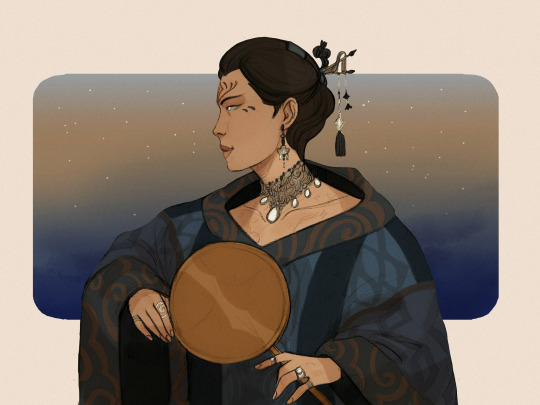

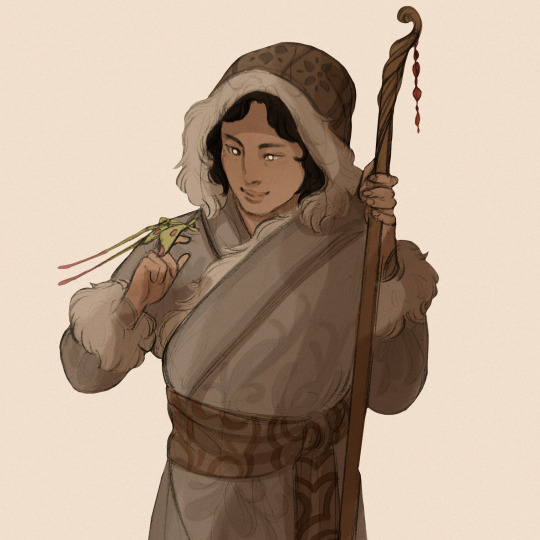

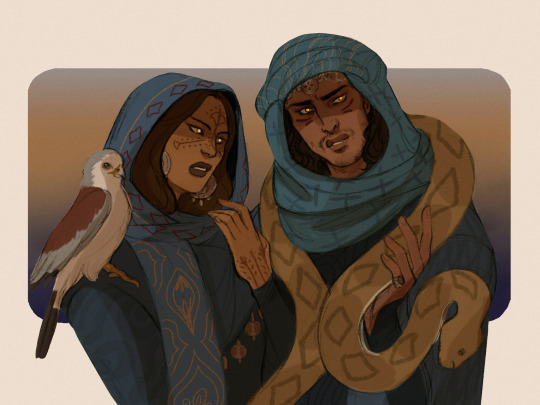

been having some fun designing the maiar, so here’s the ones i’ve done so far
ëonwë | ilmarë | aiwendil | olórin | curumo | alatar and pallando
3K notes
·
View notes
Text
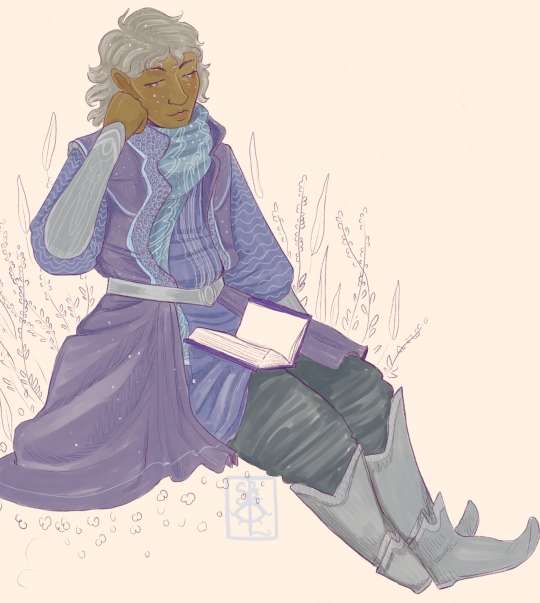
A very quick Olórin doodle bc he IS my second favorite Maia
104 notes
·
View notes
Text
This bit from The Nature of Middle-earth about Sauron’s challenges in the Second Age doesn’t stop being funny:
Some remant [of Orcs] had escaped to hidings in the northern parts of the Misty Mountains and the Grey Mountains and were not multiplying again. But further east there were more and stronger kinds, descendats of Morgoth’s kingship, but long masterless during his occupation of Thangorodrim [so, presumably from Utunmo], they were yet wild and ungovernable, preying upon one another and upon Men.
…the Eastern Orcs, who had not experienced the power and terror of the Eldar, or the valour of the Edain, were not subservient to Sauron - while he was obliged for the cozening of Western Men and Elves to wear as fair a form and countenance as he could, they despised him and laughed at him.
Just…imagine Sauron, in his Annatar form, showing up with the expectation of commanding vast Orc armies and the Orcs going “lol no, prettyboy”. It’s great.
It gets darker when you think about it, though, because after the creation of the Ring, I expect the life expectancy of any Orcs who had laughed at Sauron would be short. And unpleasant.
It’s also interesting because this is more agency and autonomy that we generally see from Orcs in LOTR and the Silm. They’re not just the enemy’s cannon fodder. They have a society, albeit a dreadful one defined by violence against both each other and outsiders. They have opinions.
And, as an additional worldbuilding note, it tells us that Sauron at this point can’t just switch between physical forms immediately at will, as I would have thought (and as one would expect from his confrontation with Huan in Tol-in-Gaurhoth). Is this a recent development? Is it something to do with the Annatar form specifically? He’s maintained that form consistently in Eregion, so maybe if he dropped it and resumed it, he wouldn’t remember it perfectly and his nose would be different or something, and the Elves would notice when he got back and be suspicious. Or is the creation of physical forms (fanar, to use Tolkien’s word) by Maiar (and possibly Valar) more complicated and time-consuming generally than I had previously assumed?
And finally - sorry, silvergifting fans - it tells us that Sauron was preparing for his conquest of Middle-earth and recruiting orcs during the Eregion period, before the creation of the One Ring - so he was actively playing the Gwaith-i-Mírdain, he wasn’t just in a “chilling with elves” phase until some moment when things came to a head.
149 notes
·
View notes
Text
Occasionally fans debate whether Gandalf's evident skill in fire-magic is due to his possession of Narya, the Ring of Fire, or if it's just a natural talent. I think the evidence is ambiguous and could be read either way, though I personally prefer the "it's just a natural talent" interpretation.
Arguments for this interpretation: Elrond's statement at the Council that the Three were not made as weapons but for "understanding, making, and healing, to preserve all things unstained", and the general sense that the "elemental" powers of the Three are meant to be understood as metaphorical rather than literal. Círdan says that Gandalf will use the ring to rekindle hearts. And although Galadriel, wielder of the Ring of Water, is shown to use water-magic in the creation of her mirror, so does Elrond, wielder of the Ring of Air, when he brings down the river on the Black Riders. So evidence of the other rings being linked to any kind of literal elemental power is ambiguous. Meanwhile UT mentions that "[Gandalf] would at times work wonders among them [the Men of the North], loving especially the beauty of fire" -- suggesting that Gandalf's use of fire is due to his inherent affinity for that element.
My real reason for preferring this interpretation though is because I think it's clear at least that Gandalf has a persistent symbolic/thematic association with fire that goes beyond just his possession of Narya. Tolkien frequently describes his personality using fiery metaphors, etc. And I think for one of the Maiar it makes sense that a symbolic/thematic association could also express itself in the literal form one’s power takes.
The main counterargument to this interpretation is Tolkien's statement in Letter 301 that "[Fireworks] appear in the books [...] because they are part of the representation of Gandalf, bearer of the Ring of Fire, the Kindler". Even this is somewhat ambiguous, though... I think it could be read as a reference to Gandalf's general thematic association with fire, with his possession of Narya being used as another example of that association. The fireworks are after all said to be part of the representation of Gandalf himself, rather than of the ring. (Incidentally, it's also ambiguous whether the epithet "the Kindler" in that passage is referring to Narya or to Gandalf himself.)
27 notes
·
View notes
Text
I give you just this jumble of gods great and small to give some impression of the delightful atmosphere into which you plunge in the Kalevala -- in case some have never plunged. If you are not of this temperament -- or think you are not designed for getting on well with these divine personages, I assure you they behave most charmingly, and all obey the great Rule of the Game in the Kalevala which is to tell at least three lies before imparting any accurate information however trivial. It had become I think a kind of formula of polite behaviour, for no one seems to believe you until your fourth statement (which you modestly preface with 'all the truth I now will tell you, though at first I lied a little').
J.R.R. Tolkien, On ‘The Kalevala’
25 notes
·
View notes
Photo



Gandalf stumbled upon the statue of Nienna, Valinor flashbacks flooded when his name was Olorin#silmarillion #Tolkien #LotR pic.twitter.com/Ij6NEgSgLt
— SALMON (@SALMON_Line)
August 11, 2021
Follow the artist at https://twitter.com/SALMON_Line
54 notes
·
View notes
Text
I’ve got my hands on NoMe, time for more WTF quotes. In chapter XII Tolkien mentions that “[Elvish] conception (and therefore birth 9 löar later) was nearly always in Spring”. Apparently Elves have a mating season.
15 notes
·
View notes
Text
tbh though it amuses me how frequently fanfic mentions Gandalf's blue eyes, and I feel like it's not just the movies but also people channeling Dumbledore and his "twinkling blue eyes".
Gandalf was shorter in stature than the other two; but his long white hair, his sweeping silver beard, and his broad shoulders, made him look like some wise king out of ancient legend. In his aged face under great snowy brows his dark eyes were set like coals that could leap suddenly into fire.
pedantic reminder to fanfic writers: book!Gandalf is shortish and dark-eyed, not tall and blue-eyed like Ian McKellen
19 notes
·
View notes
Text



Even as the old wizard spoke, the great horse came striding up the slope towards them; his coat was glistening and his mane flowing in the wind of his speed. The two others followed, now far behind. As soon as Shadowfax saw Gandalf, he checked his pace and whinnied loudly; then trotting gently forward he stooped his proud head and nuzzled his great nostrils against the old man’s neck.
Gandalf caressed him. ‘It is a long way from Rivendell, my friend,’ he said; ‘but you are wise and swift and come at need. Far let us ride now together, and part not in this world again!’
-”The White Rider” The Two Towers
Happy Birthday to @lost-in-tolkiens-universe! 🎉 I hope you have an absolutely fantastic day!
12 x 9" watercolor, ink, gouache
536 notes
·
View notes
